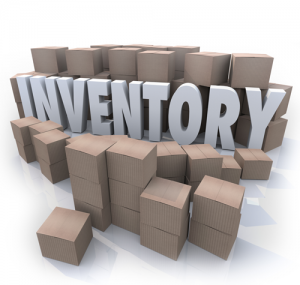How to Get Rid of Unwanted Inventory
Posted on August 21, 2018 Inventory management is a delicate dance. A juggling act between under-ordering and over-ordering stock. For instance, what do you do when you get a large order for an item manufactured in China (the land of long lead times), and the customer wants it yesterday?
Inventory management is a delicate dance. A juggling act between under-ordering and over-ordering stock. For instance, what do you do when you get a large order for an item manufactured in China (the land of long lead times), and the customer wants it yesterday?
It sounds counterintuitive, but in order to keep your inventory act together, sometimes you have to let it (your inventory) go. The first step is to separate the stock you know you’ll want to hold onto from the unwanted, extraneous stuff in your warehouse. Then you can start focusing on the excess, un-usable inventory.
Keep in mind that, like real estate, inventory is not actually worth what you paid for it. Its value fluctuates, in that it’s only worth what someone will pay you now for it. Consider also that the space it takes up could be more valuable to you than the money you can pull in once the stuff is marketable. And, maybe it will never be marketable.
7.5 Ways to Let it Go
It is important to have a plan for liquidating excess stock. Below are some tips on how to Let it Go, which you may want to include in your plan. (These tips are covered in a white paper on the topic published by Effective Inventory Management.)
1. Send it where it’s needed. Just because one branch doesn’t need a product, doesn’t mean it can’t be used in another location. As they say: “One man’s trash is another’s treasure.”
2. Return it. While some vendors are better than others about accepting returns, it doesn’t hurt to try. Also, try to train your buyers to negotiate the terms for the return of material with a vendor–before you place the big order.
3. Reduce the price. Don’t underestimate the allure of price reductions. A customer might purchase a discontinued item if the price is substantially lower than a similar item from normal stock. Retail stores often use this psychological pricing approach. But be sure you’re not cannibalizing your other product lines before you reduce prices.
4. Incent your salespeople. Proper incentives can have dramatic results.
5. Advertise its availability to other suppliers. Do some research to find Internet sites that specialize in liquidating materials to see if the materials may still be needed elsewhere.
6. Substitute it for a less expensive item. If the manufacturer replaces model A with another Model (B) and you’re stuck with a few pieces of the discontinued model, consider offering one of the discontinued models at a lower price.
7. Donate it. Can a charity organization or other non-profit use some of your dead or slow-moving inventory? (Tip: Talk to your accountant or tax advisor for details and restrictions concerning material donations. A good source for finding organizations that can use what you have to offer is the National Association for the Exchange of Industrial Resources (1-800-562-0955 or www.naeir.org)
7.5 Toss it. OK, no one really wants to throw things out, especially in today’s recycling-conscious era, but it might actually be the best or only option. Again, we suggest you doublecheck with your accountants. They may be aware of IRS guidelines – such as photographing the stock before you toss it.
To learn more about inventory control and other supply chain areas covered by Lanham Associates – solutions, consider joining us in Phoenix on Oct. 15 for a free Supply Chain Intensive Class for customers. Register now by contacting Lauren Penson at LaurenP@Lanhamassoc.com.

